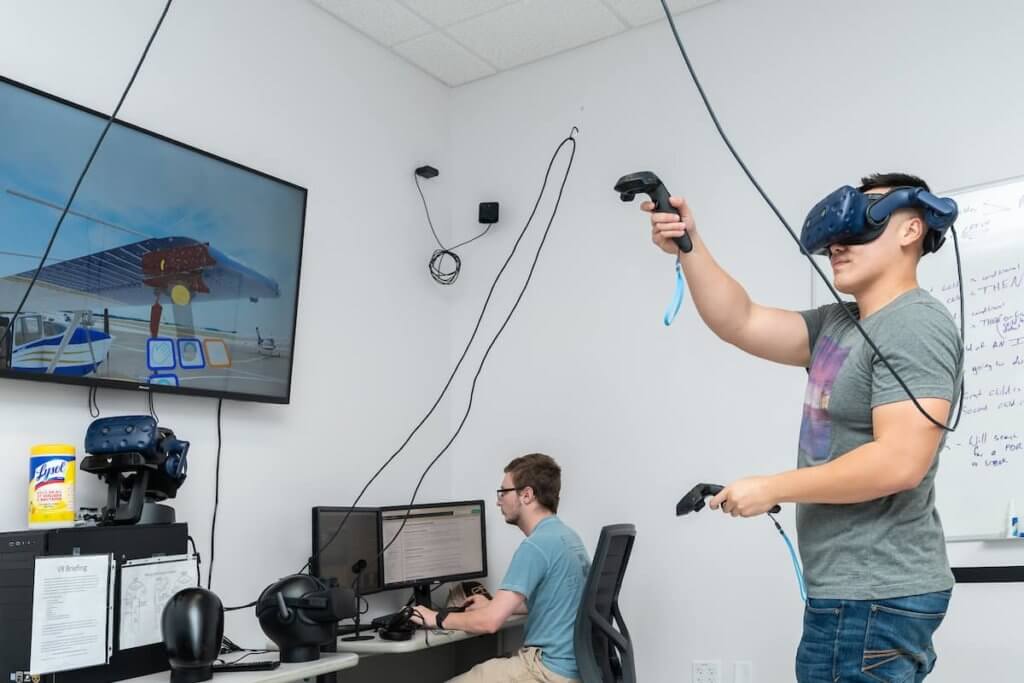Welcome to our recurring post, 3D Interactive Tech Talk, highlighting how interactive technology is being used right now and where it’s headed.
Embry-Riddle’s 172 Walk-Around Enhancing Flight Training
 Flight training is time consuming and expensive – at least it used to be. The folks at Embry-Riddle are changing that standard.
Flight training is time consuming and expensive – at least it used to be. The folks at Embry-Riddle are changing that standard.
Armed with HTC Vive Pro virtual reality headsets, students participate in a “172 Walk-Around” scenario that “takes students through a step-by-step pre-flight aircraft inspection that is required before flight. The simulation provides valuable practice in completing inspections, but more importantly, Friedenzohn said, it tests students’ ability to spot potentially hazardous defects.”
They can also fly a virtual F/A-18 Hornet “as it attempts a particularly tricky maneuver: connecting with a military version of the Boeing 767 for refueling in flight.” And up next, technicians will complete repairs on virtual engines, assisted by augmented diagrams and text prompts.
Beyond having access to 134 flight simulators, including a virtual lab where students build and test unmanned aircrafts and can inspect plan crashes from anywhere in the world, there are also space flight and space station courses. It’s all pretty amazing, and really just getting started. It will be exciting to follow their progress!
Jetstar’s VR Training First of Its Kind in Australia

Jetstar Airways has developed a virtual reality maintenance training program for its Boeing 787 and Airbus A320 models, and it’s the first of its kind in Australia.
It’s currently in its “proof of concept’ stage with about 30 employees, and Jetstar is planning to expand this to its engineering team soon, “which will see approximately 100 employees per year to be trained for each aircraft type.”
As it stands, they’re excited by the early results, with self-paced, personalized learning opportunities, along with improved recording and reporting capabilities – all with a reduction in time needed on an actual aircraft to complete the training.
The expected ROI beyond ‘time on equipment’ savings is exceptional too. They’ve experienced significantly shorter training times, with immersive trainings taking about 30 minutes compared to 3- 3.5 hours. “Compared to previous methods, we expect to save about three hours per employee per year per aircraft type” – not to mention greatly improved learning outcomes as well as a new, highly accurate way to assess maintenance technician’s learning.
It seems a safe bet to expect to see more immersive trainings coming to Australia soon!
Do you have a question regarding this technology? Hit us up here now to discuss how this could apply to your needs.
And check out our virtual training solutions to see 6 real world case studies on how businesses are training their operations, maintenance, and field service teams.


